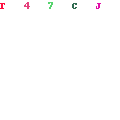|
|
While the materials range from fossilized tree sap (as in amber), through pure carbon (as in diamond) and includes various mineral compounds (like aluminum oxide which is the basis of both the sapphire and the ruby).
So what is a crystal gem stone and what meaning does this have on how it is treated?
The crystal gem stone has a meaning that is distinct from other amorphous types of gem stones.

An amorphous gem stone is one that contains a mixture of elements or compounds suspended in a solid form. Like the piece of cement on a sidewalk, all of the ingredients are mixed randomly.
Examples of amorphous gem stones are turquoise and opal.
A crystal is more like a brick wall, where each element is stacked in an even and regular pattern. This type includes quartz, beryl and, of course, the diamond.
Crystals and Gem Stones – Crystal Shape:
Studying crystals and gem stones starts with the shape. Cubic crystalline gem stones break into facets that are parallel and of similar length.The simplest is, of course, the cube (with six faces), but can include shapes with four, eight, twelve, twenty four and as many as forty eight parallel equal sized faces. Diamonds, garnets and the cousin of the ruby, the spinel, are included in this category of crystals and gem stones.
Other crystals with regular faces include the hexagonal and tetragonal, which differ from the others in the number of directions that facets are pointing.
Topaz, jadeite and microline feldspar are examples of gem stones with unevenly sized facets.
Crystals and Gem Stones – Crystal Color:
Several things can affect the color of a crystalline gem stone including material composition, shape, and setting. But the crystal structure of the stone has the most unique effect.The layers of crystals act like tiny mirrors and prisms that bend, reflect, refract and enhance any ambient light that enters the gem. The most distinct example is a certain type of alexandrite which appears blue or green in daylight, but red and purplish in artificial light.
Sapphires, garnets and tourmalines can respond in a similar manner to changes in light.
Crystals and Gem Stones – Crystal Structure:
The effect of the crystalline structure of the gem can affect more than its color and brilliance.It determines how the stone can be worked and shaped by cutting. The process of cutting a gem stone uses the natural planes of the crystal to chip pieces of the hard material off, leaving a clean, flat surface in its place.
The more complex the crystal, the more cutting options are available.
Understanding the structure and physics of the crystal as it pertains to the gem stone has great meaning for the gemologist. When starting with a raw, uncut gem, it determines, to a large degree, what the final product can look like.
Crystals – It's what many gem stones are made of. And the study of crystals and gem stones are what it takes to make those gem stones into jewelry.